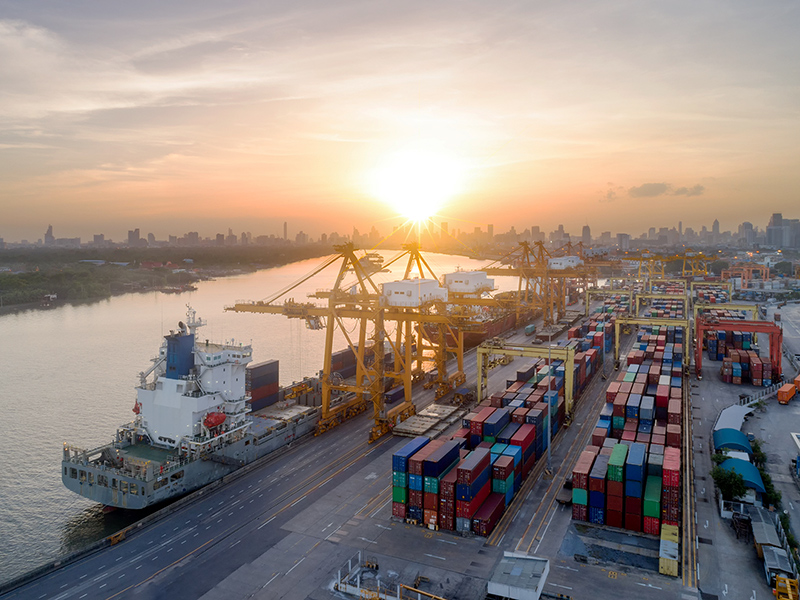
Ask a sustainability practitioner what happens after mentioning the word materiality to a colleague for the first time, and she may likely tell you, “wide-eyed bewilderment.” And once that same colleague begins the materiality process, his or her bewilderment often transforms into grief. It is important to understand that materiality—much like grief—is a journey.
It is a journey worth taking, since materiality analysis is an extremely valuable business tool, helping companies like Sanofi bring a diverse set of internal and external stakeholders together in dialogue, Unilever help drive consensus around what topics to prioritize and where to invest resources, Starbucks determine where to focus goal-setting, or Telenor set expectations and boundaries on what information to report. Perhaps even more importantly, materiality can also indicate where not to focus limited resources and attention.
So how to get from grief to value? Here are BSR’s tips to navigate the five stages of materiality grief.
- Denial—We don’t need this. When you begin a materiality process, the first reaction from your colleagues may be closed-fist denial. Materiality can be as much an awareness-raising tool as a change management process, and those new to it may initially resist change. It’s important in this phase to be as transparent as possible about what materiality entails, how individuals will be involved, and how the outcomes will be used.
- Anger—Don't add to my workload! Once you have broken through the initial denial, colleagues may react with anger to the very suggestion of adding to their workloads, claiming that materiality is not their job or is even a waste of time. The best tactic here may be patience, but it’s also worth sharing testimonials and case studies from other internal or external stakeholders to help your colleagues see the value in their participation.
- Bargaining—Fine, but let's do the minimum. At this stage, colleagues accept to be involved in a materiality process but under certain conditions. It helps to understand what colleagues are willing to commit in terms of time and resources, as well as their expectations of what they will receive in return.
- Depression—But I don’t see my function listed as a priority. Once materiality is underway and initial results have been produced, depression may set in. While that may be too strong a word, there are traces of this emotion as colleagues begin to see where their areas or functions appear on a materiality map. They may fear that their function is being de-prioritized or stands to lose resources. Here, it’s important to remind them that all issues, functions, and individuals consulted during materiality are already considered high priority; otherwise, they would not have been included.
- Acceptance—Alright, this actually makes sense. Finally, you reach the end goal of acceptance. After being informed, consulted, and in some cases involved in workshopping the results of the materiality process, colleagues have accepted the outcomes and recognize that the analysis describes a reality they may not have understood before. The real work to drive the results forward begins here.
Thankfully, leading companies are finding ways to avoid the grief altogether—by more closely linking materiality to business drivers from the outset. We see three distinct ways this is happening:
- Integration of sustainability-oriented materiality assessments into enterprise risk management processes. Companies that have a well-developed enterprise risk management (ERM) process are far better at managing sustainability issues. There is an opportunity for ERM processes to utilize the outputs of sustainability-oriented materiality assessments, and for those two processes to be much more closely aligned. Risk is a key factor in defining priorities for companies like Lockheed Martin, which seeks to reduce the risk of negative impacts to the business, the planet, and society while cultivating long-term, responsible economic and social growth.
- Prioritization and support for global agendas, such as the Sustainable Development Goals (SDGs). Companies recognize that succeeding in the long run today requires a well thought-through sustainability strategy that aligns with the global risks and opportunities related to business continuity. To that end, the SDGs, while not designed as a business framework, are increasingly applied to company strategy. The SDGs and materiality assessments in many ways complement each other. Conducting a rigorous materiality assessment linked to the SDGs can help companies identify and make the greatest impact on those goals that are most closely aligned with their business models and strategic priorities. Companies like Vattenfall are demonstrating what this looks like in practice.
- Identifying new value creation opportunities for the organization, such as the allocation of capital. In many ways, materiality is an attempt to express where companies stand to create the most value for their internal and external stakeholders. Companies like Hitachi Chemical approach materiality as a method to maximize value for stakeholders and use it as a key element of their value creation stories.
Are you looking to leverage your materiality process to create a more resilient business strategy? Read our new report, Redefining Sustainable Business: Management for a Rapidly Changing World.
Topics
Let’s talk about how BSR can help you to transform your business and achieve your sustainability goals.








